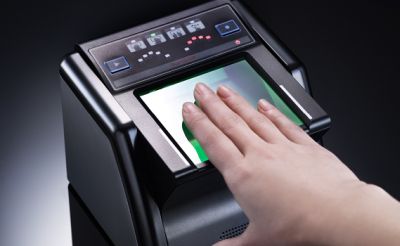The Science of fingerprinting has traversed a long and eventful journey from ink fingerprinting to electronic FBI fingerprint, Los Angeles. Live Scan centers now capture fingerprints through a scanner and then transmit the same electronically to the FBI or DOJ for matching with their extensive database. What’s more, the automated identification system at the FBI matches the fingerprints automatically in a few minutes. These technological advancements have reduced the scope of errors in fingerprinting. However, occurrence of errors is not completely eliminated. Two percent of fingerprints are still rejected by the FBI. What’s more, 75% of these are accepted after being captured for the second time. So, if applicants follow the norms the first time itself, delay and inconvenience due to rejection can be avoided.
Avoiding Rejection
So, understanding the causes for low quality fingerprinting is imperative before visiting the live scan center.
- Washing hands too often with soap or disinfectant.
- Frequent involvement in activities like rock climbing, weight lifting etc.
- Excessive exposure to chemicals, bleach and more so.
- Sometimes, ridges become harder to capture after a certain age.
- Frequent involvement in typing or handling papers.
Taking a break from rigorous activities, applying lotion a few days before the fingerprinting appointment and using alcohol swabs or soap and water to clean hands of debris ensure capturing high quality fingerprints.
Special Circumstances
Besides these, some special circumstances are the cause of low quality fingerprinting. Here are the ways to deal with these:
- Capturing the print of deformed fingers is challenging. However, a device, better known as spoon can be used to capture fingerprints as efficiently as possible. It is advisable to take both rolled and flat impressions of all fingers. If the problem persists, a notation in the fingerprint block (webbed or deformed) is mentioned.
- Missing fingers refer to a situation where the finger is present but cannot be printed due to an injury. A notation for each missing finger must be filled in the block.
- In case of fully amputated fingerprints, the notation must be mentioned in each fingerprint block.
- In case of partially amputated fingers, fingerprint of the available part of the finger must be captured. Capturing both flat and rolled impressions is advisable.
- In case the tip of a finger or fingers is amputated, capturing flat and rolled prints of the existing part is recommended.
- Some people have one or more extra fingers. Here, the thumb and first four finger impressions is captured. The impression of the extra finger is left out.
- Flat and rolled impressions of scarred fingers are taken. Notations are not required.
- Work and age often blurs the ridges, which makes fingerprinting challenging. In such case, a procedure called milking the finger is done. The ridges are raised to facilitate clear impressions.
The above tips reduce the chances of rejection. Well, experienced authorities at live scan centers take care of these points to avoid inconvenience to their customers.
One such customer centric live scan center is Anshin Mobile Notary & LiveScan.
For further details, find them at: www.anshinotary.com





